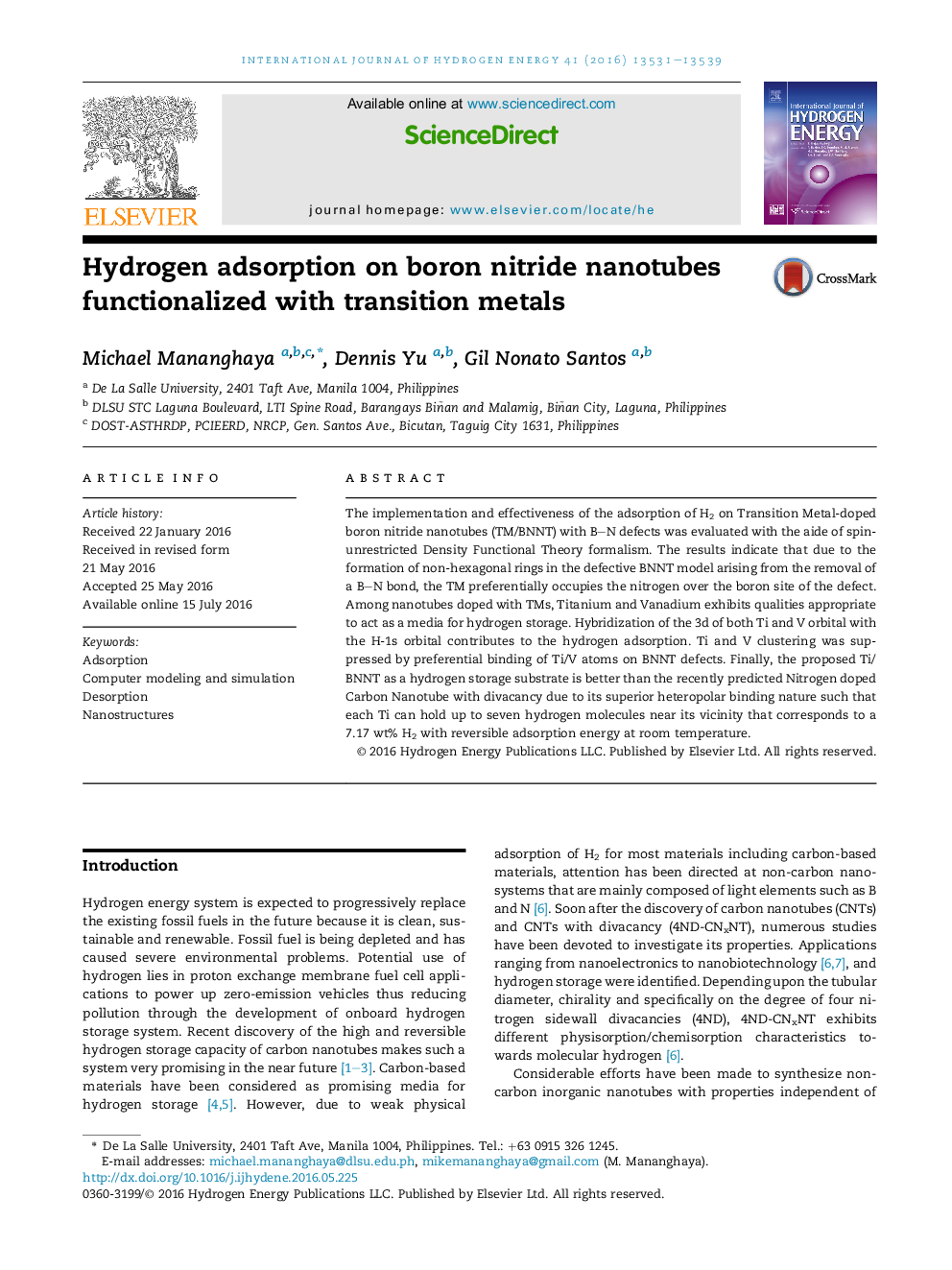| Article ID | Journal | Published Year | Pages | File Type |
|---|---|---|---|---|
| 1276467 | International Journal of Hydrogen Energy | 2016 | 9 Pages |
•Functionalization of Ti and V with BNNT is thermodynamically stable.•Ti and V/BNNT complex enhanced the binding of H2 molecules.•7.17 wt% H2 is achievable in the Ti/BNNT complex.•Ti/BNNT complex has a reversible H2 adsorption at room temperature.
The implementation and effectiveness of the adsorption of H2 on Transition Metal-doped boron nitride nanotubes (TM/BNNT) with BN defects was evaluated with the aide of spin-unrestricted Density Functional Theory formalism. The results indicate that due to the formation of non-hexagonal rings in the defective BNNT model arising from the removal of a BN bond, the TM preferentially occupies the nitrogen over the boron site of the defect. Among nanotubes doped with TMs, Titanium and Vanadium exhibits qualities appropriate to act as a media for hydrogen storage. Hybridization of the 3d of both Ti and V orbital with the H-1s orbital contributes to the hydrogen adsorption. Ti and V clustering was suppressed by preferential binding of Ti/V atoms on BNNT defects. Finally, the proposed Ti/BNNT as a hydrogen storage substrate is better than the recently predicted Nitrogen doped Carbon Nanotube with divacancy due to its superior heteropolar binding nature such that each Ti can hold up to seven hydrogen molecules near its vicinity that corresponds to a 7.17 wt% H2 with reversible adsorption energy at room temperature.
